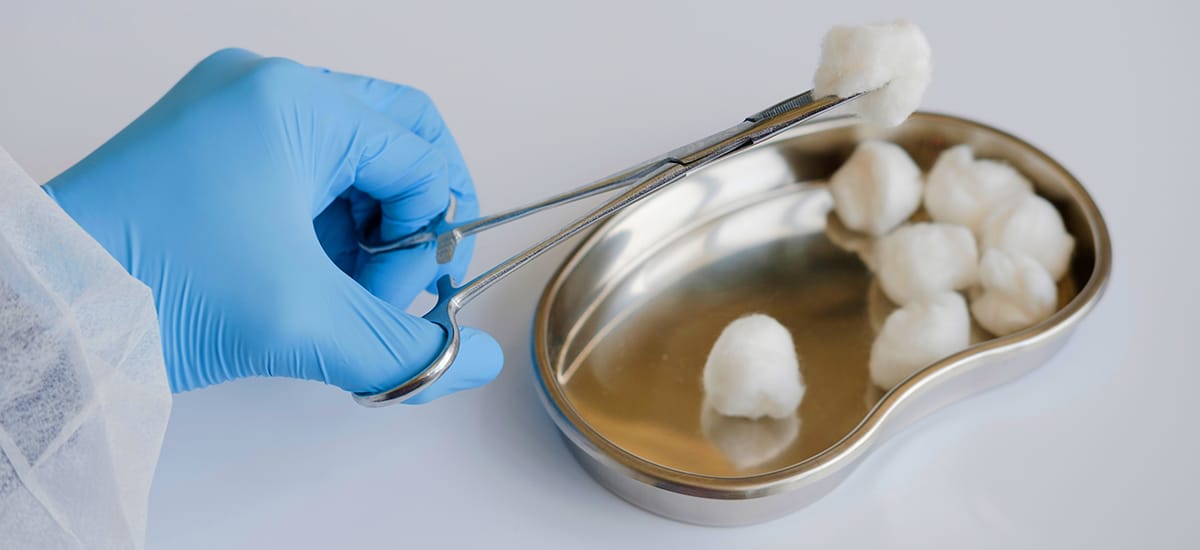
Cotton is one of the oldest and most versatile materials we use and has served a wide variety of purposes all throughout human history. Its modern medical usage dates back to the early nineteenth century, and there are mentions of cotton used to form pads over wounds even as far back as the Middle Ages!
In addition to general medical usage, cotton products also serve several first aid purposes, like cleaning excess fluid from around minor wounds.
Cotton comes in various shapes, sizes, and configurations to serve its multitude of jobs, such as:
In addition to general medical usage, cotton products also serve several first aid purposes, like cleaning excess fluid from around minor wounds.
Cotton comes in various shapes, sizes, and configurations to serve its multitude of jobs, such as:
Why cotton items should be in your first aid kit

Cotton has many properties that make it ideal for use in first aid and other medical applications. It is absorbent, hypoallergenic, soft, and receptive to the three main methods of sterilization — gamma radiation, ethylene oxide and steam.
Loose, fluffy cotton – like that found in cotton balls and cotton wool roll – is typically used for cleaning the skin or applying topical creams and liquids. You should never use loose cotton to clean an open wound, as the fibres can get stuck to the wound.
With so many medical uses, it’s clear to see why cotton is one of the most common materials used in first aid supplies. Here’s a breakdown of different cotton-based products and why you should keep them stocked in any first aid kit:
 Cotton swabs
Cotton swabs
Cotton swabs are sterile pads usually used to apply antibacterial ointments or to clean the skin around a wound. These non-fluffy swabs are highly absorbent and ideal for cleaning, dressing, and wiping excess fluid away around wounds.
Cotton buds
Cotton buds are used to precisely clear debris or dirt from around a wound or to apply ointments or creams delicately. While common, the use of cotton buds to clear ear wax from the ear canal is not recommended as it may lead to ear wax impaction or cause a perforated eardrum.Cotton wool roll
Cotton wool roll can be used as an absorbent material to soak up excess fluid from around a wound. Note that the looseness of cotton wool roll makes it unsuitable for cleaning open wounds, as the fibres may become trapped inside the wound, increasing the risk of infection.Cotton wool balls
Cotton wool balls are great for applying ointments or disinfectant and general skin cleaning. Like cotton wool roll, the use of cotton balls to clean open wounds is not recommended, as loose fibres may stick to the wound, slowing the healing process.Commonly asked questions
Should you use cotton to clean an open wound?
You should avoid using loose cotton wool on open cuts and grazes, whether it’s in the form of a cotton ball or cotton pad. Loose cotton wool can leave behind fibres in the wound that slow the healing process and increase the risk of infection.Why shouldn't I use cotton buds to clean my ears?
Using a cotton bud in your ear canal to clear cerumen (earwax) only serves to push the wax deeper into your ear canal. Your ear has a natural cleaning system that works kind of like a conveyor belt, sweeping excess wax out regularly. If you push wax deeper inside by using a cotton bud, it prevents the wax from being swept out and can potentially lead to a dangerous build-up of compacted ear wax.Cotton buds also run the risk of puncturing the eardrum and causing hearing loss. If pushed deep enough into the ear, the cotton bud can cause damage to delicate structures behind the ear canal and cause nausea and vomiting, loss of taste, partial or complete deafness, and in some cases, facial paralysis.
Even if you believe that you use cotton buds carefully to clean your ears, remember accidents can always happen — and in cases where an accident can cause serious damage, it’s better to be safe than sorry!
Can I use cotton wool or gauze to protect a wound?
The priority for healing a wound should be maintaining a moist healing environment with the use of bandages or wound dressings. Loose cotton wool should be avoided when dressing a wound as it can leave behind fibres harmful to the healing process, while gauze is ineffective at creating a moist environment that facilitates cell regeneration.To find out more about the correct way to facilitate wound healing, read our blogs on Plasters Explained and Bandages for First Aid.
Takeaway
While cotton can seem like an all-purpose material for wound care and dressing in first aid, there are cases where its use is not recommended. Knowing how to use cotton wool products safely and appropriately will greatly improve your first aid skills.Read our other blogs for more information on first aid or contact us for further advice and information on our products.
About the author:
Jo Stokes is a writer, marketer and trained first aider at First Aid Online.
Find out more about Jo.
By Jo Stokes

